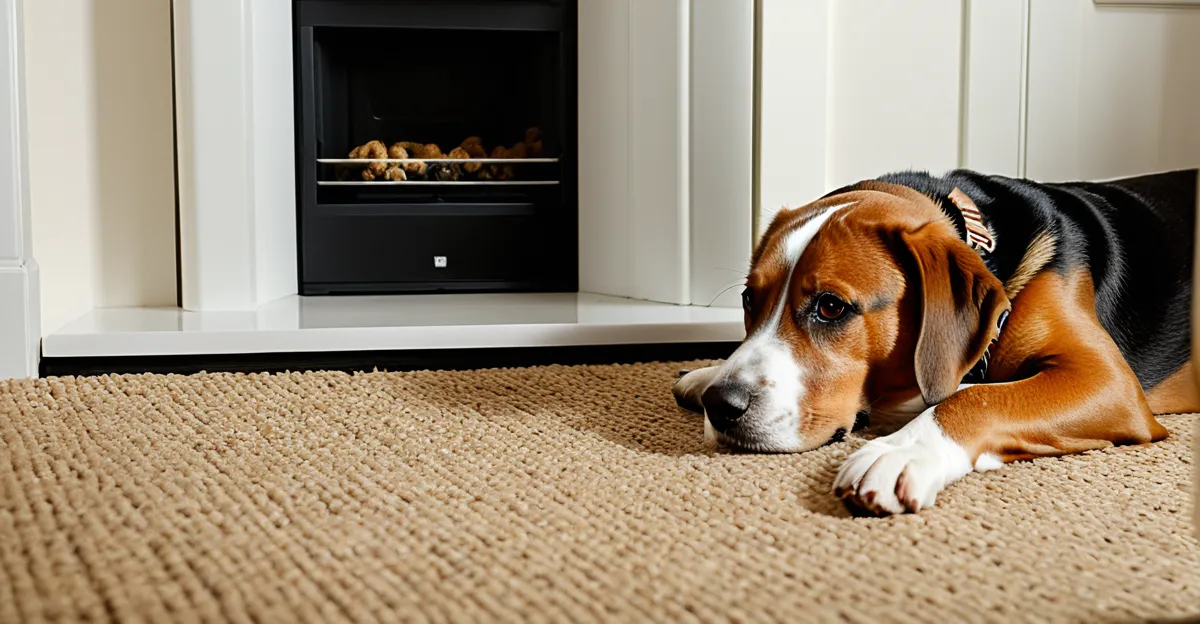Essentials for Pet Preparation
Bringing a pet into your home involves more than just opening your door to them—it requires preparation. A critical first step in pet ownership is compiling a pet supplies checklist. This comprehensive list should cover both immediate and long-term needs to ensure your pet is healthy, happy, and comfortable.
Overview of Essential Supplies
For both dogs and cats, consider the following essentials:
Topic to read : How can you choose the right veterinarian for your pet in the UK?
- Quality food tailored to their dietary needs is crucial; high-quality, species-appropriate food ensures they get the necessary nutrients.
- Food and water bowls: Opt for stainless steel or ceramic to avoid allergies and bacteria.
- Collars and leashes for safe outdoor adventures.
Selecting the right food involves understanding the nutritional requirements of your specific pet breed, life stage, and any existing health concerns. Consulting with a veterinarian can provide tailored dietary advice.
Importance of Grooming and Hygiene
Necessary grooming tools vary by pet type but generally include the following:
Also to read : How do UK pet owners choose the right pet food brand?
- Brushes and combs suitable for your pet’s coat type help maintain a healthy, tangle-free coat.
- Shampoos and conditioners formulated for pets to ensure cleanliness without damaging their skin.
- Nail clippers and ear cleaners to maintain overall hygiene.
These grooming supplies contribute to your pet’s health by preventing issues like matting and infections, thus enhancing their quality of life.
By organizing these essentials, you prepare a nurturing environment for your pet, smoothing the transition into their new home.
Creating a Safe Environment
Ensuring your home is a safe haven for pets requires meticulous planning. Address various pet safety needs and engage in home pet-proofing to minimize risks.
Key Safety Measures
Every pet has unique needs, and understanding the required safety measures is crucial. For instance, if you own a dog, ensure the garden is securely fenced to prevent escapes. Cats often need vertical spaces, like shelves or perches, to safely explore their environment. Regardless of the animal, use sturdy gates to block off hazardous areas, like kitchens or garages.
Pet-Proofing Your Living Space
Pet-proofing is essential to protect both your home and your animal companion. Cover electrical cords with cord protectors and secure all windows and balconies with screens or bars to prevent accidental falls. Store chemicals and cleaning supplies out of reach in locked cabinets, and remove or secure any heavy objects that could topple.
Common Household Hazards
Be aware of common household hazards that could unknowingly endanger your pets. Foods like chocolate and grapes are toxic to dogs, while lilies can be deadly to cats. Plants should be selected carefully. Keep small items, such as buttons or toys that could be swallowed, out of reach. Regularly inspect your living space to identify and eliminate new risks.
Implementing these strategies helps create a truly safe environment, ensuring your pet can thrive in their new home.
Legal Considerations
When welcoming a new pet into your home, understanding pet laws in your region is crucial to avoid any legal complications. In the UK, these laws ensure the well-being and rights of the pet and the community.
Microchipping is mandatory for dogs in the UK. It helps quickly reunite lost dogs with their owners, providing essential identification details. For puppies, microchipping should be done by the age of eight weeks. A registered veterinarian or qualified professional can perform the procedure, which involves inserting a small chip under the animal’s skin, typically between the shoulder blades.
Some breeds require specific licenses, particularly breeds considered dangerous under UK law. It’s important to verify if your dog falls into this category and to understand the associated restrictions and obligations. Registration often involves proving your capability to securely and responsibly manage the pet.
Familiarize yourself with local regulations, such as leash laws and pet waste disposal requirements. They vary from one area to another and are designed to maintain public safety and hygiene.
By adhering to these legal requirements, pet owners contribute to a responsible community while safeguarding their pets’ welfare.
Costs Associated with Pet Ownership
Bringing a furry friend into your life brings joy and companionship, but it also comes with financial considerations. Understanding the pet ownership costs is essential for planning and creating a suitable budget.
Initial Costs vs. Ongoing Expenses
The initial expenses for a new pet are usually more significant, encompassing items such as adoption fees, vaccinations, and basic pet supplies. Basics can include food dishes, collars, and initial grooming items. On the other hand, ongoing costs include food, regular veterinary check-ups, and grooming demands. These recurring costs can fluctuate greatly depending on the pet’s breed, size, and health needs.
Factors Influencing Costs
Different types of pets incur varied expenses. Dogs, particularly large breeds, generally require more food and healthcare compared to smaller animals like cats or hamsters. Veterinary care costs can also vary substantially based on the pet’s species and any existing health conditions. Additionally, unforeseen expenses such as emergencies or special dietary needs should be considered.
Budgeting for Unexpected Expenses
It’s prudent to allocate a portion of your budget for unanticipated events. A pet insurance policy can help cover emergencies, potentially easing the financial burden of unexpected medical costs. By planning ahead, you ensure that both routine and unforeseen expenses are manageable, allowing your pet to receive the care they need without putting undue strain on your finances.
Creating a Comforting Environment
Building a comforting environment for your pet is essential to their well-being. Pet-friendly homes ensure a harmonious living space for your furry friend.
Space Allocation
Designate specific areas for your pet. This not only aids in managing their activities but also helps them feel secure and at ease. Consider using gates to define boundaries and identify safe zones for relaxation and play. Ensure they have ample space to move freely and explore.
Bedding Options
Choosing the right bedding is crucial in providing comfort. Pet comfort is enhanced with plush materials that offer warmth and support. Opt for washable beds made from hypoallergenic fabrics to maintain hygiene. Position the bed in a quiet, draft-free area, so your pet feels cozy and secure during rest.
Environmental Enrichment
Environmental enrichment plays a significant role in your pet’s mental and physical stimulation. Engage them with toys and activities designed to keep them entertained and active. Interactive toys promote mental engagement, while climbing structures can satisfy a cat’s natural climbing instincts. Regularly rotate toys to maintain their interest and prevent boredom.
By thoughtfully arranging space, bedding, and enriching activities, you contribute to a nurturing space where your pet feels safe and loved.
Resources for New Pet Owners
Welcoming a new pet into your home is an exciting journey that can also be daunting without the right support and resources. Understanding where to turn for help can make all the difference in ensuring a smooth transition for both you and your furry friend.
Recommended Local Veterinarians and Pet Shops
Having access to a trusted veterinarian is essential for maintaining your pet’s health. Veterinarians provide vaccinations, routine check-ups, and emergency care. In your community, several veterinarians may offer specialized services like dental care or dermatology. Selecting a vet who aligns with your pet’s specific needs can ease the stress of medical issues.
In addition to veterinary care, locating a reliable pet shop is crucial. Quality pet shops offer a variety of high-grade foods, toys, and other necessities that are vital for your pet’s daily life. Some shops even provide grooming services or host adoption events, which can be valuable resources.
Online Communities and Resources for New Pet Owners
The internet is a treasure trove of online communities where pet owners can connect, share experiences, and seek advice. Social media platforms and forums dedicated to pet care allow you to gain insights from both professionals and seasoned pet owners. Websites and apps can offer everything from training tips to health information, which can be invaluable as you navigate life with a new pet.
Importance of Pet Training and Socialization
Training and socialization are integral parts of responsible pet ownership. Puppies and kittens benefit greatly from obedience classes where they learn basic commands and social skills. These classes help curb unwanted behavior and encourage positive interactions with humans and other animals. Finding local training services can provide structured learning environments that boost your pet’s confidence and manners.
Utilizing these resources not only enhances the quality of life for your pet but also fortifies your ability to provide a nurturing and loving home.
Final Checklist for New Pet Owners
Welcoming a new pet into your life is a thrilling yet demanding journey. To ensure you’re fully prepared, it’s essential to compile a comprehensive final checklist. This list should cover all the necessary items and tasks to transition smoothly into pet ownership.
Comprehensive Final Checklist of Items and Tasks
Before your pet arrives, confirm that you have all the essential items prepared, such as quality food, feeding bowls, and grooming tools. Keep this checklist handy to avoid last-minute scrambles:
- Pet bed and cozy blankets
- Toys and interactive games for mental stimulation
- Collars, leashes, and ID tags for safety
- Hygiene supplies such as shampoos and nail clippers
Tips on Adjusting to Life with a New Pet
The initial days can be overwhelming. Give yourself and your pet time to adjust. Construct a routine that includes feeding, playtime, and rest, which will greatly assist in their acclimatization. Encourage a calm and stable environment to help your pet feel secure as they explore their new home.
Resources for Further Guidance and Support
To further ease the transition, tap into support community resources. Veteran pet owners, both online and in local communities, can offer valuable advice and insights. If challenges arise, seeking professional help from trainers or pet behaviorists can offer beneficial strategies.
This checklist aims to aid new pet owners in creating a harmonious living environment that nurtures a lifelong bond with their furry companions.





